Winter foraging: hunting for nature's hidden treasure
Penned on the 14th December 2023
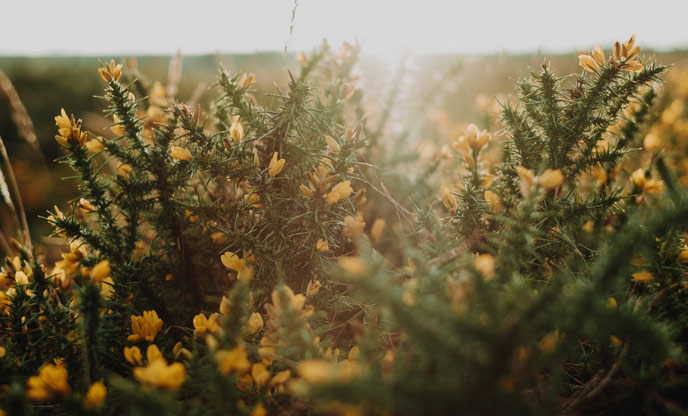
Winter. The slow season. The days in which the dark draws in and we retreat to the warmth of our homes, where muddied boots and rain-wet coats decorate the halls. Just as the natural world falls dormant in the depths of the winter months, we humans do too. We choose the enticing warmth of indoors over walks in the biting cold. The short days and long nights turn our existence temporarily nocturnal. With many of us leaving home in the morning before the sun rises, only to return long after it has set, we find ourselves with little time to steal moments in daylight outdoors. It is easy to turn our attention away from the natural world during this season of retreat. Yet winter, perhaps more than any other season, is an important time to venture outdoors and spend time immersed in nature.
The Importance of Going Outdoors in Winter
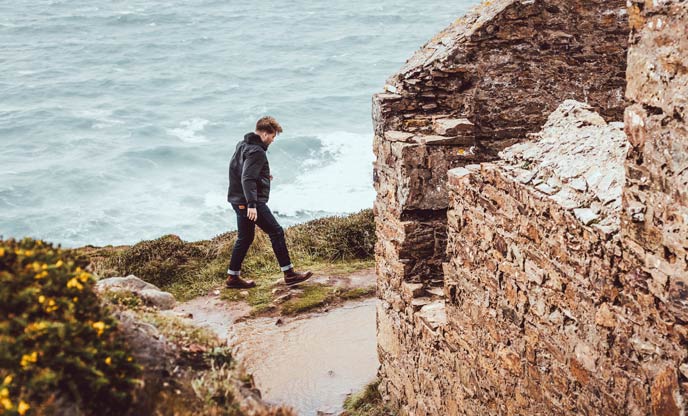
Time outdoors can offer us the space to unwind from everyday life, practicing mindfulness in nature helps to elevate our mood and reduce stress. Even just a short walk is the perfect opportunity to soak up much-needed Vitamin D, supporting our bodies in their effort to stay healthful and energised in the colder months. Our screen times dramatically increase during winter, contributing to eyestrain and feelings of dissociation and fatigue. A few moments immersed in the elements can awaken and reinvigorate our senses, reconnecting us with the present moment and, ultimately, ourselves. Why not get fully immersed in the nature and give wild swimming a go this winter? Take a look at our guide to the benefits of wild swimming here.
Spending time outdoors in winter is also the perfect opportunity to visit some of our favourite places, free from the bustling crowds. Winter walks in the fresh air of the countryside or along winding coastal paths have an undeniable sense of serenity to them, even when braving the elements at hand. Spending time in our favourite places during these quiet moments offers us the chance to appreciate them in a new light, perhaps noticing details we missed in the thrill of spring and summer.
And that’s the beauty of winter: it asks us to be more present, to pay more attention.
“Look closer”, it whispers, at the buds on barren trees, the saplings in the frosted earth - Nature’s vital signs, strong and steady, even in the darkest months of the year. In this world that appears frozen and barren, life continues thriving, quietly biding its time until the warmth and light return.
Treasures to be Found
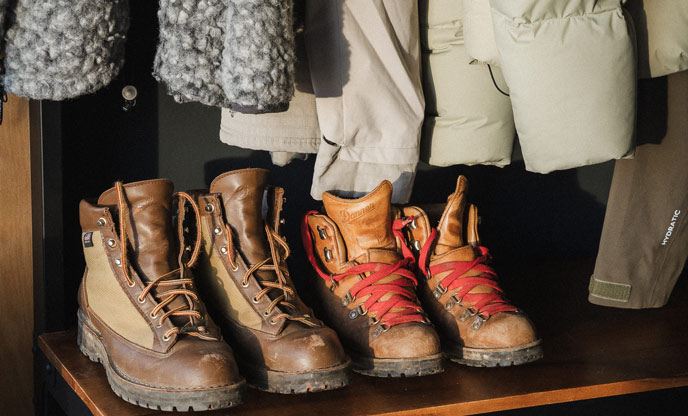
Whilst in the warmth of June we may find ourselves inspired to take an impromptu afternoon walk in the sun, pulling on a thousand layers to venture into the winter cold is much less inviting. It can help to have something to encourage us to leave the house, and for nature enthusiasts, Winter Foraging offers just that.
Although unfamiliar to many of us, foraging is no new activity. Before the days of supermarkets and online food orders, foraging was the main way of sourcing the food we ate. Gathering our produce in this way meant we were always eating in sync with the season, connecting us with the rhythm of the natural world. Our guide 'Living in tune with the seasons' explains these benefits in more detail. Take a look here.
Wandering into the wilderness and collecting berries from branches, or rummaging through foliage to find a particular plant to eat can seem daunting at first. However, venturing into the world of foraging is easier - and a lot more user-friendly - than it may seem, with many of nature’s treasures available right at our doorstep. As we emerge from the darkest days of the year and steadily tread towards the light, winter provides the perfect months to experiment with foraging and reconnecting with the wild world around us.
Here are a few foraging tips, including some plants and veggies that are in season at this time of year, to help you get started:
Nettle
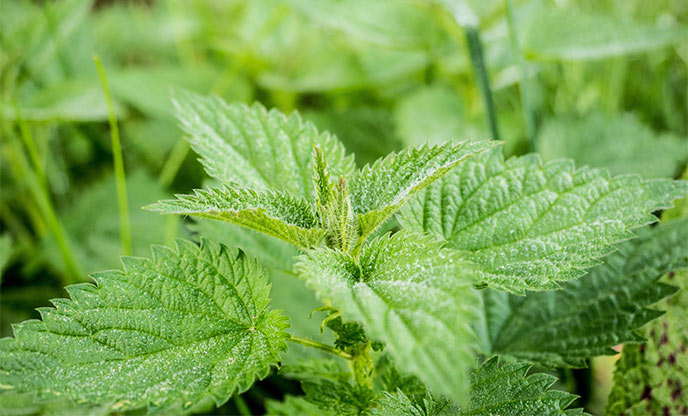
When we think of nettle, many of us probably picture days wandering barefoot in summer, returning home with constellations of itchy red pinpricks on our ankles and shins. However, nettle has been used in traditional medicine and culinary practices for centuries. Rich in vitamins and minerals like Vitamin A, C, and Iron, as well as having potent anti-inflammatory benefits, it seems somewhat miraculous that a humble garden plant we know so well - and mostly avoid - can do us so much good.
One of the easiest ways to consume nettle is by brewing it into a herbal tea. When boiled, the leaves lose their irritating effect, and adding a little honey into the mixture makes for a calming, healthful drink.

Tips for harvesting and brewing nettle:
● Wear thick garden gloves; the hairs on the fresh leaves are highly irritating to skin
● Find a patch of nettle with top leaves that are ideally knee-high, especially in areas with a lot of footfall, and avoid harvesting the lower levels of the plant
● Use scissors or garden shears to remove the top layer of leaves from the plant, leaving the lower half of the plant still rooted so it can continue to grow and flower
● Soak the leaves in a bowl of water before rinsing thoroughly
● Add the leaves into a pot of cold water on the stove and bring to the boil
● Turn off the heat and allow the nettle to stew in the water for 5 minutes (the longer you leave it, the stronger and more bitter the tea will taste)
● Pour the mixture through a strainer
● Add honey, lemon, or cinnamon to taste
Gorse

Abundant in countryside areas and coastal dunes, gorse’s yellow flowers offer a burst of colour in winter’s desaturated landscape. It is one of the few plants that flower in the winter and can be used as decoration for the home. Protect yourself from the plant’s needles by wearing gardening gloves and long sleeves. Take garden shears and remove some of the outer branches of the gorse plant, where the buds are flowering, and use them to decorate windowsills and shelves, or as a centre-piece for the coffee or dining table.
The petals of gorse flowers are the only edible part. They have an almond/coconut aroma with a slightly bitter taste and can be consumed in small amounts by using them to garnish dishes.
Feeling inspired to bring the outdoors in to decorate the home this festive season? Take a look at our guide to creating your very own foraged Christmas wreath.
Dandelion

With its sunny mane of yellow petals, Dandelion is best known as a weed. What is less known, however, is the whole plant is both edible and medicinal - even the roots! It flowers in late spring, with leaves ready for harvest by the end of February. Best known for its diuretic properties, it is used in traditional herbal medicine to treat UTIs and support liver and kidney function.
Dandelion is an incredibly versatile plant. Its leaves have an earthy flavour and can be used similarly to spinach in savoury dishes, such as this sautéed dandelion and eggs recipe, or to make herbal tea when harvested young. The flowers are sweet to taste, making a beautiful garnish for spring dishes; they can even be used to craft a dandelion salve to soothe wind-chapped skin.
As it is considered a pest found in most grassy areas, it’s best to harvest dandelions from your own garden, or an area that you know will be untouched by pesticides.
Wild Garlic
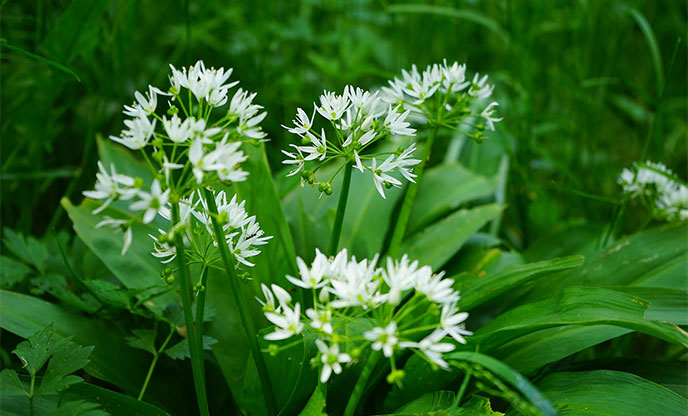
Celebrated for its antioxidant, antibacterial and antifungal health benefits, wild garlic is an ideal plant to experiment with when you’re new to foraging. Easily identified by its unmistakable scent (you guessed it - garlic!) it grows abundantly in woodland areas all over the UK. When flowering, the plant is decorated by delicate white flowers which are also edible and can be used as a garnish on many dishes from salads to risottos.
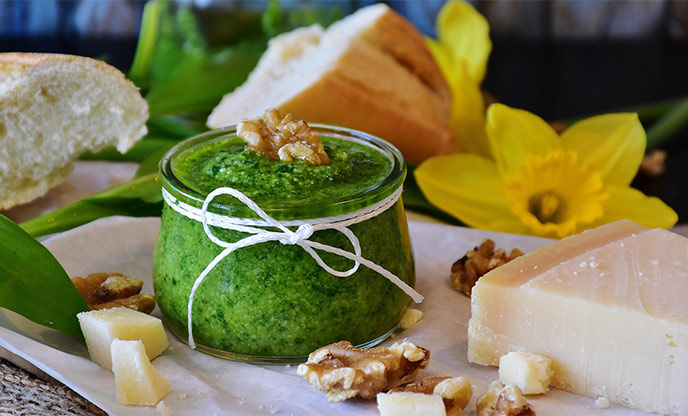
The vibrant green leaves, best picked when young, are a wonderful addition to soups and can also make a delicious pesto.
Seasonal Eating
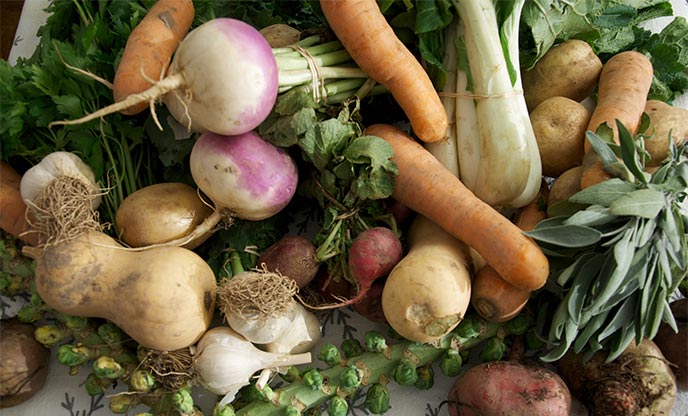
Combining seasonal eating with the edible treasures we find whilst foraging offers us the chance to reconnect with nature in the times we feel most distant from it. But eating seasonally doesn’t necessarily mean sourcing every meal from the great outdoors, nor does it have to be complex. Take a look at our spring, summer and autumn foraging guides to advise you throughout the seasons. For those of us who don’t have easy access to wild areas, it can look like choosing fruits and vegetables that are in season, wherever we source them from. This time of year is when fruits and veggies such as apples, carrots, leeks, mushrooms, celeriac, squash, and white cabbage are in season. Recipes and guidance can be easily accessed online or through books such as The Almanac: A seasonal guide to 2024. Why not try this recipe by Anna’s Family Kitchen, incorporating easily sourced seasonal ingredients with some foraged wild garlic to get started?
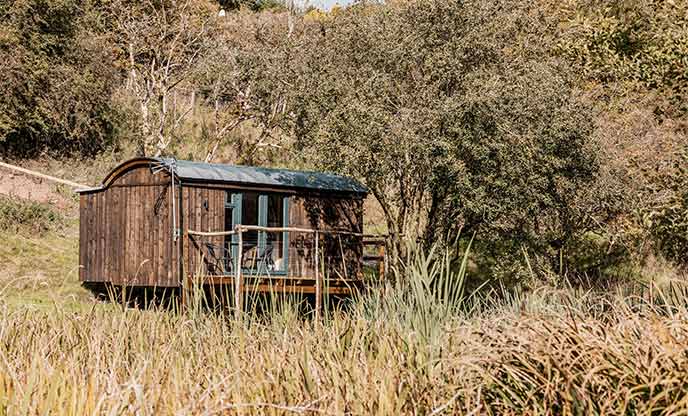
It's so important to spend time in nature, even during the cooler months. Our collection of heavenly hideaways are located amongst the wilds and are perfect for a cosy winter break. Head out on a long walk and find some foraged goods, later to be enjoyed snuggled up beside the wood burner.
For further inspiration on things to do outdoors during the seasons, take a look at our creative guide here.
* Disclaimer: When foraging wild food you must be able to positively identify what you are harvesting. Do not eat any plants, berries, mushrooms, or herbs you are uncertain of, as some may be poisonous. Use multiple methods of identification - such as Google, plant identification Apps, or books. Wash produce thoroughly before consumption. Consult your doctor if you are taking medication before consuming certain herbs as interaction may occur. Always be respectful to nature, and try not to disturb surrounding wildlife. Do not take more than you need, leaving enough of the plant in place to regrow, and ensure you have permission to harvest from the area *